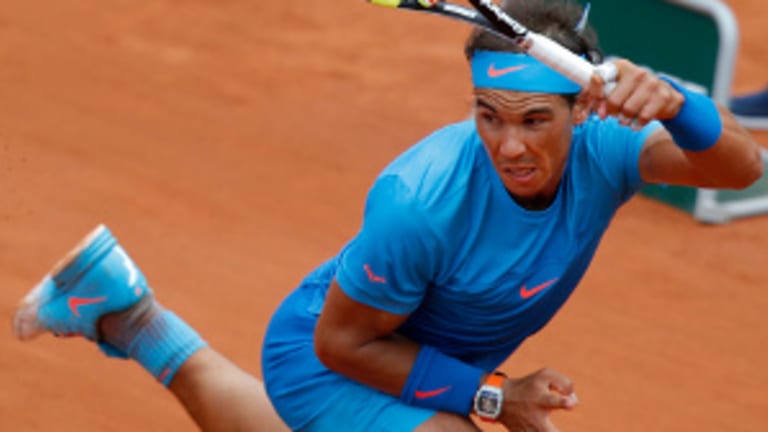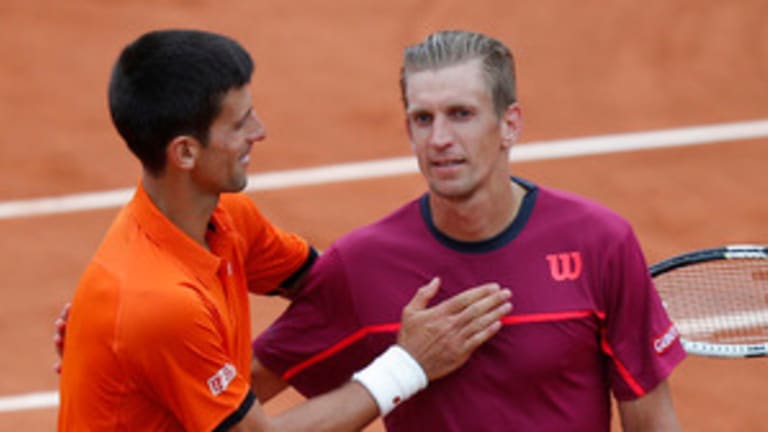It was a dull Tuesday in Paris until Rafael Nadal arrived inside Court Philippe Chatrier. His first-round match had been highly anticipated; how, everyone wondered, would the struggling nine-time champion play?
Instead, it was how Rafa looked that had people talking. He was dressed in blue, all in blue, from his headband to his shirt to his shorts to his socks to his sneakers. Or at least half of his sneakers. In a kind of reverse-spats effect, the back of his shoes were blue and the fronts were white.
How did it look? I was on the verge of giving it a thumbs up, until someone on Twitter posted a photo of Rafa next to a Smurf—then the thumb, of its own accord, went down. But I do still like the half-blue sneakers.
Now that we have the fashion out of the way, how was Nadal’s form? He started with a few short, tight-looking forehands, and was late on a few backhands. His 18-year-old opponent, Quentin Halys, was “going for the winners all the time,” as Rafa put it, which made it tough to find a rhythm. The clay in Chatrier is playing unusually slow this year, and Rafa had some trouble hitting his heavy topspin through it early on. But he took advantage of the opportunities presented by his erratic opponent, opened up on his shots as he relaxed, and finished in something close to full flow. The stat that tells the story of his 6-3, 6-3, 6-4 match is the unforced errors: Nadal committed 13, Halys 52.
Nadal seemed happiest with his opportunism.
“I played a good match, a solid one” he said (in translated Spanish). “When I had some opportunities, I seized them. The first games in the first set, I mean, were tough. I made some mistakes, but then afterwards I was able to hit my shots.”
Nadal said he had issues with his serve at times, and that his forehand isn’t “smooth enough” right now, but he was happy with his return game.
“It was a correct performance,” Nadal concluded. Then the King of Clay was even heard to boast, “I’m still a solid player.”


